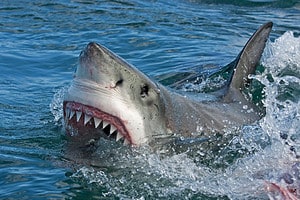Ohio has several thriving cities as well as many rural areas. As such, the state is home to a wide variety of creatures, and some of them are quite big. In this article, we’re going to focus on discovering seven of the largest animals in Ohio. We’ll take a close look at each species so we can tell you what they’re about and where they can be found.
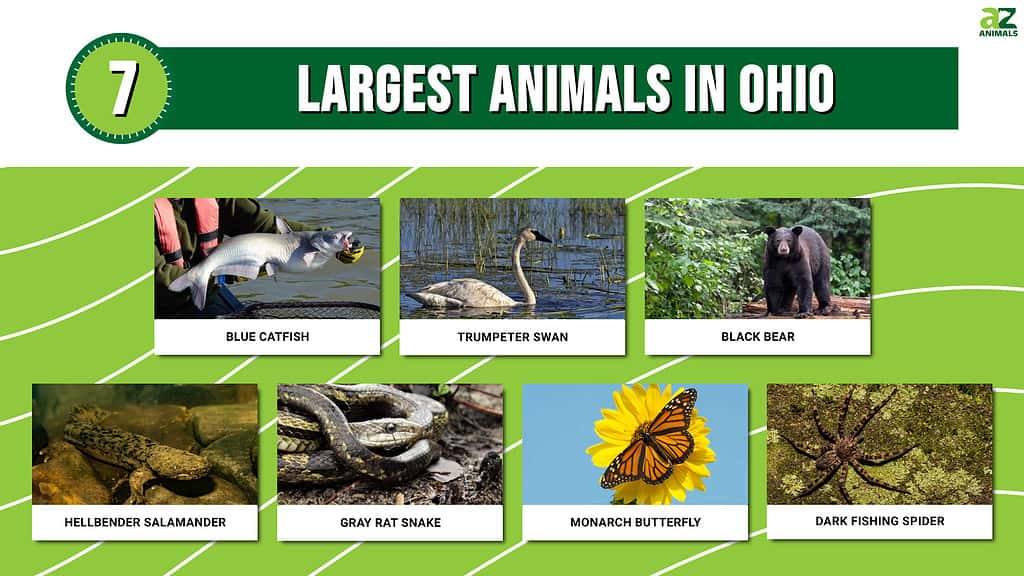
The 7 Largest Animals in Ohio
We’re not just going to pick the seven largest animals in Ohio based on size alone. That would leave us with a list that’s dominated by mammals. Instead, we’re going to focus on the largest versions of different types of animals including insects, spiders, mammals, birds, and more. We’ll show you just how big they get, where they live, and their scientific name.
1. Blue Catfish
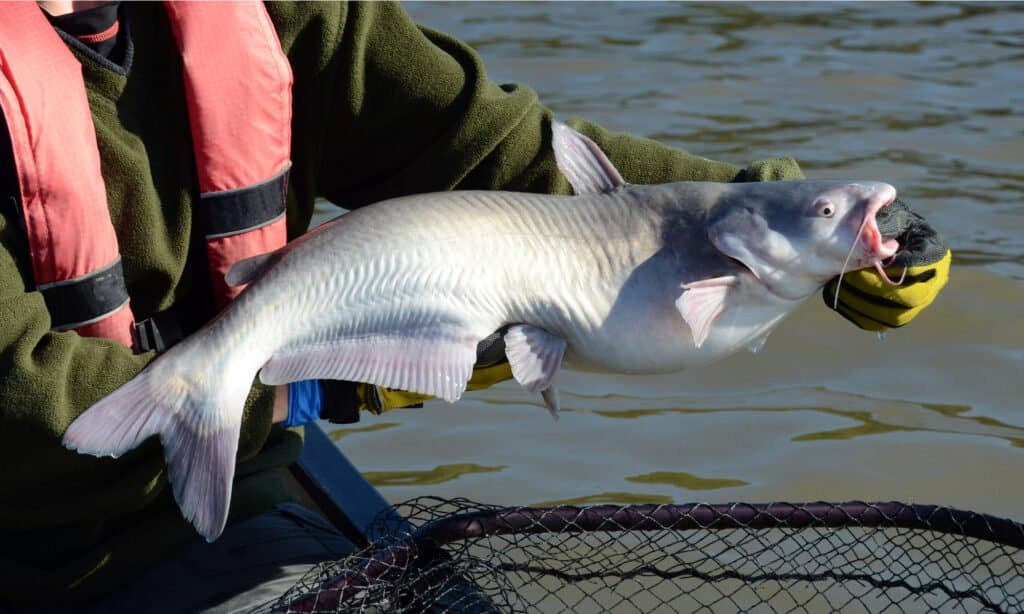
Blue
Catfish
have smooth skin rather than typical fishy scales.
©M Huston/Shutterstock.com
| Scientific Name | Length | Location |
|---|---|---|
| Ictalurus furcatus | 25 to 46 inches | Ohio River and other rivers. |
The blue catfish is the largest fish in Ohio. This fish is known for their wide mouths, unique whisker-like barbels by their mouths, and the potential to grow huge. They possess smooth skin rather than scales and have a bluish color to their bodies in many cases.
You can find this fish in the rivers that run through the state, particularly the Ohio River. The biggest blue catfish ever caught in the state measured 54.5 inches long and weighed 96 pounds when it was pulled from the Ohio River in 2009.
Although it’s not the case in Ohio, these fish are considered an invasive species in some parts of the U.S., like the Chesapeake Bay area.
2. Trumpeter Swan
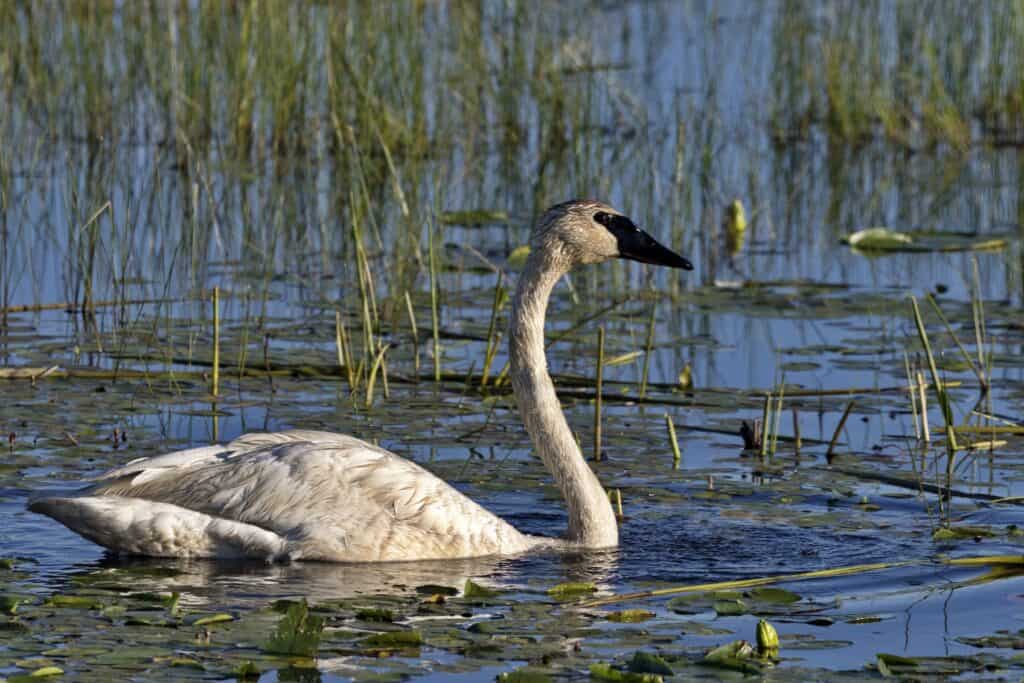
The trumpeter swan is the heaviest living bird species native to North America.
©Florence-Joseph McGinn/Shutterstock.com
| Scientific Name | Length | Location |
|---|---|---|
| Cygnus buccinator | Up to 6 feet long wingspan | Lakes and ponds in North and Central Ohio. |
The trumpeter swan is the largest bird that can be found in Ohio. These birds have a massive wingspan that measures up to 6 feet in length, and they can weigh about 25 pounds at their maximum. That makes them even bigger than the birds of prey that you’ll see stalking rabbits and other small mammals.
These birds prefer to live by the water in the northern part of Ohio throughout the summer. Interestingly, this swan once stood on the brink of extinction in the U.S. Through conservation efforts, the population shot up from about 50 birds to over 40,000.
The trumpeter swan likes to eat plants as adults, but they also eat some fish eggs, insects, and other creatures when they’re young.
3. Black Bear
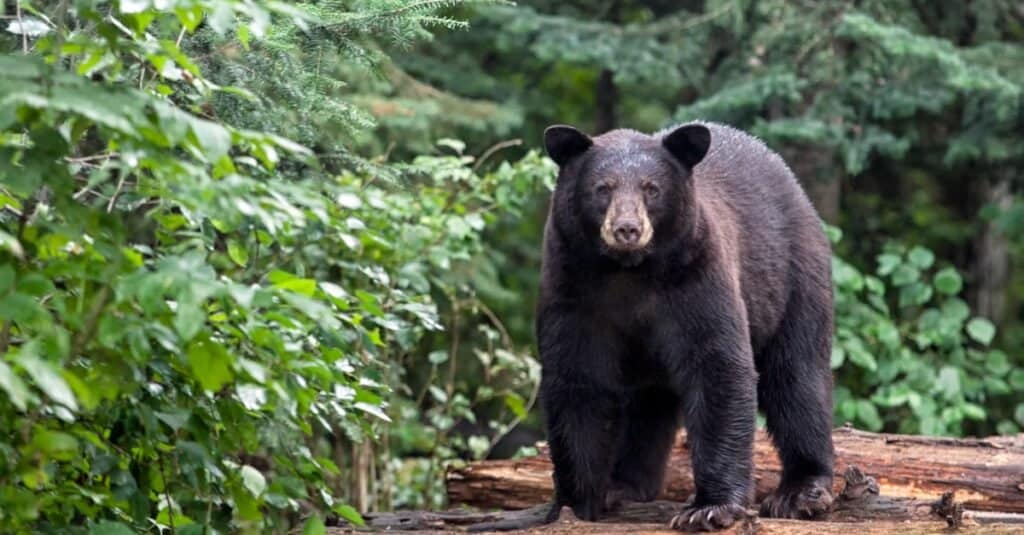
The American black bear can run up to 40mph.
©iStock.com/Lynn_Bystrom
| Scientific Name | Length | Location |
|---|---|---|
| Ursus americanus | Up to 6.5 ft including tail | Forested areas in Northeast and Southeast Ohio. |
The black bear is one of the largest animals in Ohio, and it’s something that even humans need to worry about meeting in the wild. From snout to tail, these bears can measure up to 6.5 feet long, and they can weigh upwards of 600 pounds.
You won’t find them everywhere in Ohio, though. Most times, they’ll be seen in Ashtabula, Geauga, Lake, Trumbull, Tuscarawas, Washington, Athens, Hocking, and Vinton counties. However, the overall population of these bears is so low that you don’t have a great chance of seeing them.
Black bears enjoy eating fruit, berries, honey, human garbage, and mammals like deer. However, they are dangerous to humans and should be avoided.
4. Hellbender Salamander
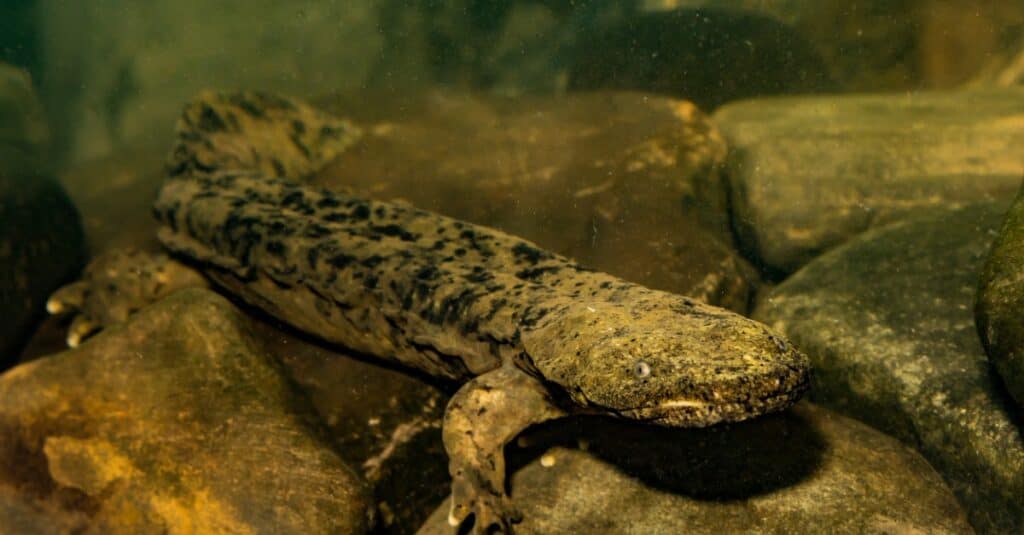
Hellbender Salamanders are an endangered species in Ohio.
©Jay Ondreicka/Shutterstock.com
| Scientific Name | Length | Location |
|---|---|---|
| Cryptobranchus alleganiensis | 12 to 29 inches | Rocky streams in central, south, and eastern Ohio. |
Despite its name, the hellbender salamander isn’t a dangerous species. Also known as the Eastern Hellbender, it is a brown, green, or black, fleshy amphibian. It can measure about 2 ½ feet in length, making it the largest aquatic salamander in the country.
Hellbenders live beneath rocks and logs that provide shelter in the water. These salamanders typically come out from hiding at night and hunt fish, various invertebrates, crayfish, and frogs.
They are not widespread in Ohio since they are an endangered species in the state. The salamanders are found mostly in the central, south, and eastern parts of Ohio. If you encounter one, it’s best to just leave it alone.
5. Gray Rat Snake
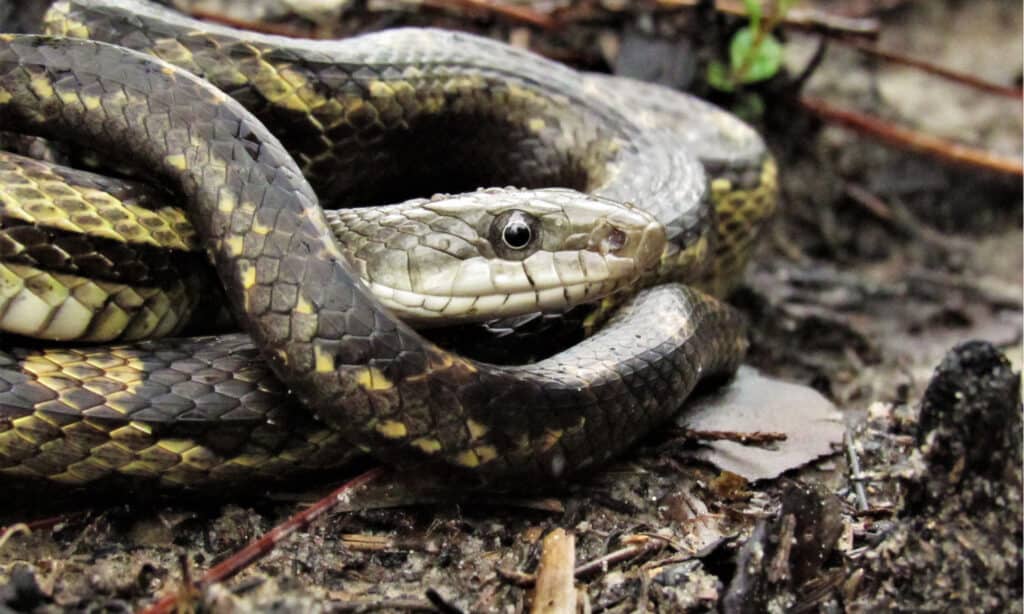
Gray Rat Snakes can grow more than 8 feet long.
©Gabbie Berry/Shutterstock.com
| Scientific Name | Length | Location |
|---|---|---|
| Pantherophis spiloides | 5 to 8 feet | Lives on the ground and trees in forests, in fields, and near buildings |
The gray rat snake (Pantherophis spiloides), often mistakenly identified as the black rat snake (Pantherophis obsoletus), is a common sight throughout much of Ohio. They’re abundant in wooded areas, especially those near water. Grey rat snakes can be found in burrows with snakes of other species, including rattlesnakes.
Like other snakes, they prefer to feast on small mammals, and they help drive down populations of rodents that can harm crops and homes.
The gray rat snake is one of the largest animals in Ohio by length alone, with many snakes measuring 6 feet in length while others top out at 8 feet or more.
6. Monarch Butterfly
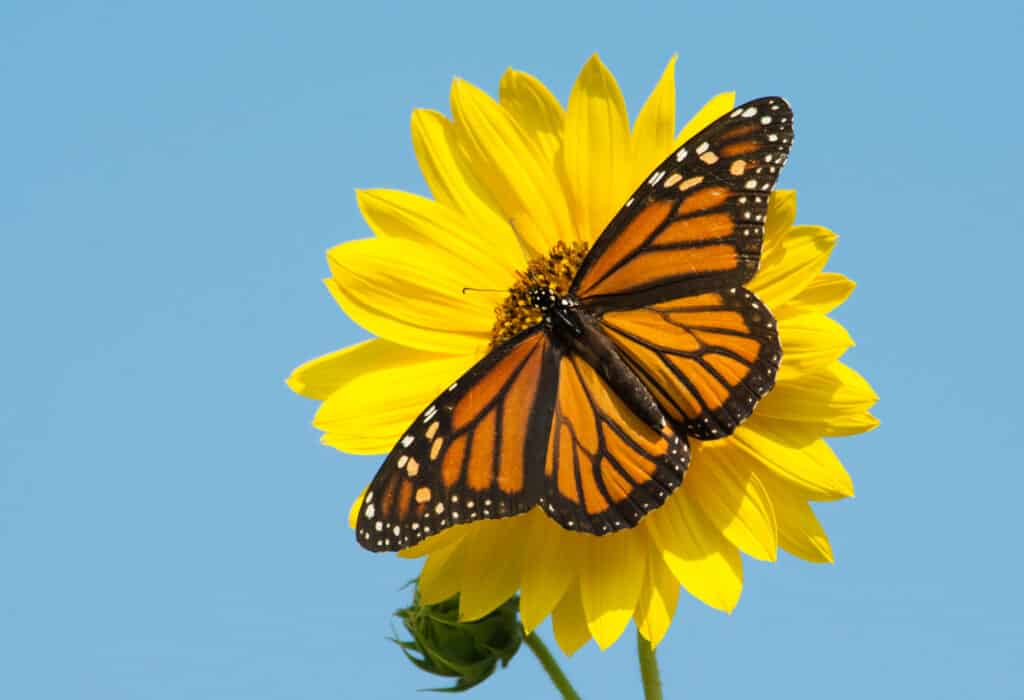
Some monarch
butterfly
migration patterns are as long as 3,000 miles.
©Sari ONeal/Shutterstock.com
| Scientific Name | Length | Location |
|---|---|---|
| Danaus plexippus | 3 to 4 inches in wingspan | Found in every county in Ohio near fields, near homes, and in trees. |
The monarch butterfly is the largest insect in Ohio simply because it has a large wingspan that can reach 4 inches. This species is easily identified by its size along with its orange and black wings with white spots along the outer portion.
Monarch butterflies are in every county in Ohio. They are commonly found in pastures, farms, open fields, wooded areas, and even near home gardens. These pollinators feed on nectar, so they will often be spotted on flowers, enhancing the natural beauty of the area in which they live.
7. Dark Fishing Spider
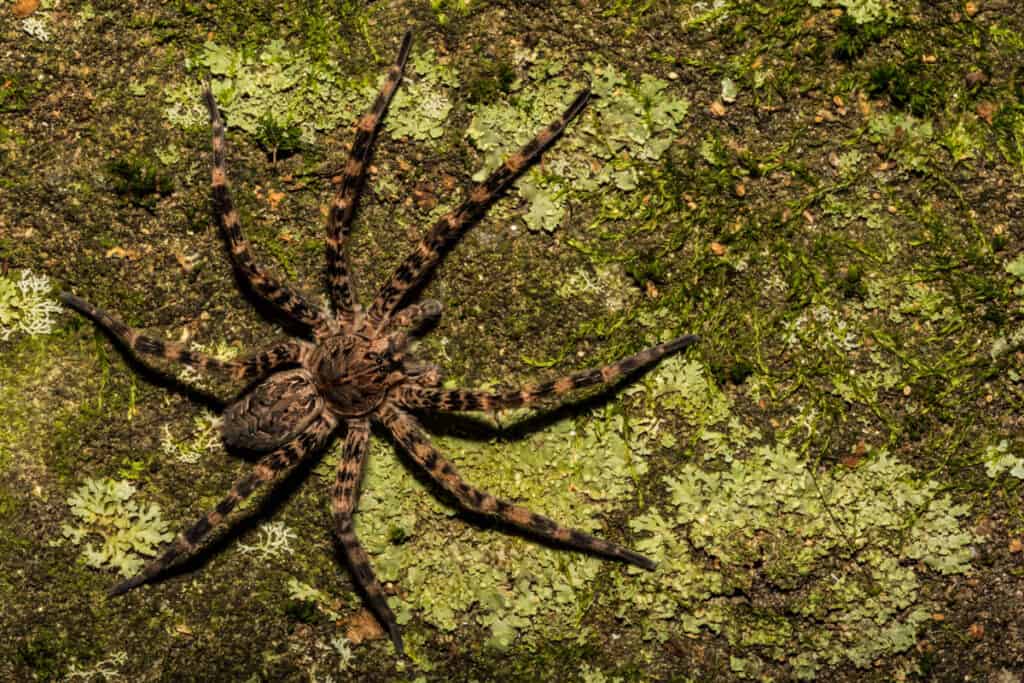
The dark fishing spider can run across the surface of water or dive into the water to catch prey.
©iStock.com/JasonOndreicka
| Scientific Name | Length | Location |
|---|---|---|
| Dolomedes tenebrosus | 2 to 4.5 inches legspan | Found close to the water in trees, on the ground, or by human structures on or near water. |
The dark fishing spider is the largest spider in Ohio since it has a bigger legspan than the Carolina wolf spider. However, it has a smaller body than that wolf spider. Nevertheless, these spiders are usually found near water where they can hunt their prey.
You’ll find the dark fishing spider on trees and on the ground near lakes and rivers. Thus, they are all over Ohio. Unlike other members of their species, they can range pretty far from water in search of quarry.
Dangerous Animals in Ohio
Now that we’ve identified the largest animals in Ohio, we feel it’s necessary to mention a few of the dangerous ones you may encounter in the wild. You should keep a look out for venomous snakes like the copperhead, as well as coyotes, black bears, and the black widow spider.
Always make sure you know what potentially dangerous animals live in an area that you’re going to travel to in this state and others. You can be prepared for encounters and still enjoy nature.
Summary of the 7 Largest Animals in Ohio
| Common Name | Scientific Name | Size | Location |
|---|---|---|---|
| Blue Catfish | Ictalurus furcatus | 25-46 inches long | Rivers throughout Ohio |
| Trumpeter Swan | Cygnus buccinator | Up to 6 foot wingspan | Lakes and ponds in North and Central Ohio. |
| Black Bear | Ursus americanus | Up to 6.5 feet tall | Forested areas in Northeast and Southeast Ohio |
| Hellbender Salamander | Cryptobranchus alleganiensis | 12-29 inches long | Rocky streams in central, south, and eastern Ohio. |
| Gray Rat Snake | Pantherophis spiloides | 5-8 feet long | On the ground in forests and fields, and near buildings |
| Monarch Butterfly | Danaus plexippus | 3-4 inches in wingspan | Every county in Ohio near fields and homes, and in trees. |
| Dark Fishing Spider | Dolomedes tenebrosus | 2-4.5 inches in legspan | In trees, on the ground, or by human structures on or near water. |
The photo featured at the top of this post is © Jay Ondreicka/Shutterstock.com
Sources
- Ohio Department of Natural Resources, Available here: https://ohiodnr.gov/discover-and-learn/animals/mammals/black-bear
- National Park Service, Available here: https://www.nps.gov/articles/000/american-black-bear.htm#:~:text=Most%20of%20their%20diet%20consists,on%20young%20elk%20and%20deer.
- New York State Department of Conservation, Available here: https://www.dec.ny.gov/animals/7160.html
- Ohio Department of Natural Resources, Available here: https://ohiodnr.gov/discover-and-learn/safety-conservation/about-ODNR/news/Support-Hellbenders-and-Other-Endangered-Ohio-Wildlife#:~:text=Hellbenders%20are%20an%20endangered%20species,habitat%20restoration%2C%20and%20watershed%20protection.
Thank you for reading! Have some feedback for us? Contact the AZ Animals editorial team.






